The RACER Mailbag, May 22
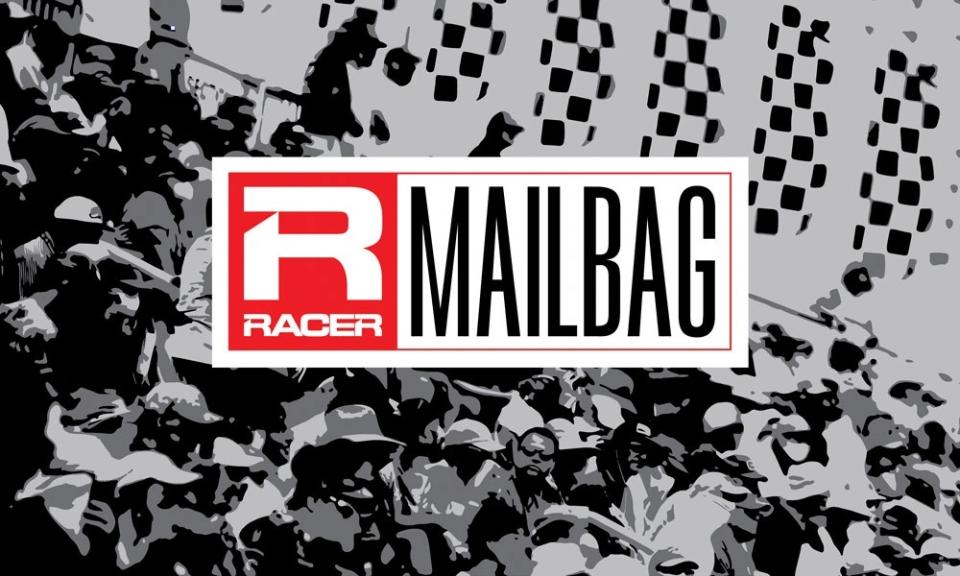
Welcome to the RACER Mailbag. Questions for any of RACER’s writers can be sent to mailbag@racer.com. We can’t guarantee that every letter will be published, but we’ll answer as many as we can. Published questions may be edited for length and clarity. Questions received after 3pm ET each Monday will appear the following week.
Q: I am hoping for some helpful feedback regarding what to do the morning of the 500 at the track. In my first two trips the last two years, we got there early and checked out the museum in the morning, before sauntering slowly back to our seats in Turn 4.
With the museum closed, though, what are the best spots to check out? Where is the best place to watch the cars heading out to pit lane? Or are we better served sleeping in an hour or two? I am open to any ideas and appreciate any guidance and insight you have.
Ashley, West Bend, WI
MARSHALL PRUETT: I asked my friends at the Elite IndyCar Facebook group to provide some answers. I’ve never been to the Indy 500 as a fan, so I’m more useless than usual here. Here’s a link to the 40-plus responses.
Q: Word is that Arrow McLaren didn’t bring its massive portable suite to Indy this year. Is the team in jeopardy? Zak Brown getting tired of the mismanagement by Penske Entertainment and thinking about exiting?
Jah from Stankonia
MP: The team tells me they have rented a mega double suite off the end of Tower Terrace that gives they guests an amazing view of Turn 3 through Turn 4 and the front straight.
Q: What do you think would happen if I started a racing series whose sole purpose was to turn the fastest lap times as possible at all the current F1 and IndyCar circuits? Didn’t care how good the TV was. Didn’t care if it was safe. Just wanted a race to see who could do 250 miles in the fastest possible time on all the current F1 and IndyCar circuits.
John Shellhamer
MP: Using the note about disregarding safety, I’d think you’d spend the rest of your life being sued by the families of the drivers who got hurt or killed.
Q: Just want to say how much I’ve enjoyed the Peacock IndyCar coverage. It’s the only reason I have a Peacock subscription. I’ve been an open-wheel fan for more than 50 years. I’m the retired dork who watches every practice session and loves it. I hope the suits remember guys like me when negotiating the next TV contract.
Richard
MP: The quality of the broadcasts has been excellent for many years. Having Hinch add deeper layers of tech insights and driver insights has taken the NBC/USA/Peacock IndyCar shows to a new level.
Q: So I’m guessing the speedway engineer at RLL is in the unemployment line by now?
Bernardo, TX
MP: I hope not. They asked a younger kid who was a performance engineer who’d never been an IndyCar race engineer to step up to that role with Graham Rahal’s car earlier this year, and that’s one hell of a tough ask coming off a failure to qualify last year with nothing but race engineering veterans in charge.
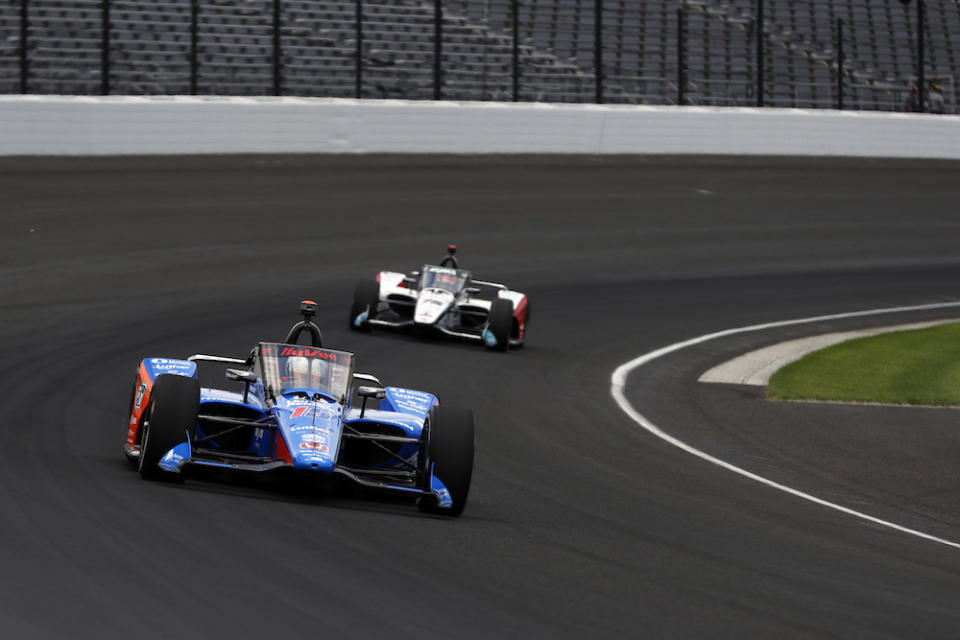
It’s been a rough start to the Month of May for RLL, but the those struggles are not the fault of any individual member of the team. Phillip Abbott/Motorsport Images)
Q: In my 50 years on God’s green earth, Saturday was only the second time I’ve ever heard of a plenum fire, and never with so much frequency. What’s the odds someone over at Chevy is sleeping with the fishes tonight?
Adam, MO
MP: Yeah, it was kinda like a bunch of bigfoot sightings happening all at once. A definite rarity, and yet, still somewhat confusing. If only the drivers had sticks with marshmallows, chocolate bars, and graham crackers they could hold over their shoulders and make smores whenever the plenum fires went off…
Q: Roger Penske owns the Speedway. He owns the series. He owns the team. He owns the Chevrolet engine manufacturing company. All three Penske cars are on the front row and none of them had the same engine plenum issues as many other strong Chevy teams did. My opinion is that Rinus Veekay is an alien or he just had an audition for The Captain with the proper Ilmor programming. (Maybe another cut and paste incident?)
Is Honda gone for good in IndyCar now?
Tom Anderson, Mesa, AZ
MP: Penske’s Will Power had a plenum fire during the Sunday morning Fast 12 practice session. Rinus is ridiculously good. Honda has not told IndyCar it’s gone, from what I understand. Yet.
Q: What was up with the Chevy engine issues during Saturday quali? Poor quality control, or something else?
JM, Tulsa, OK
MP: We wrote a little explainer story about it on Sunday, JM. Here it is.
Q: We all know ratings drive how the broadcasters structure the deals with IndyCar. I typically always watch the races on Peacock but I know the Nielsen numbers don’t track those like me who don’t watch on traditional channels. Would it benefit the series if more people who stream on Peacock not do that and watch on the NBC channel to boost the Nielsen numbers and make those numbers look better to the series, or does it not even matter?
Jon, Cleveland
MP: Actually, streaming numbers are tracked. They’re used in something called “TAD,” which is short for Total Audience Delivery, which adds the broadcast audience size and share to the streaming consumption and combines them into the TAD figure. Watch whichever one you prefer, Jon, and it will be counted.
Q: Wow, all the money that RLL put into the 500… what happened? Isn’t time for Graham to void his contract? Clearly he won’t win again with his father’s team. Also ,maybe next year don’t have a fourth car and focus on the current teams.
David
MP: I hear you, but this is the same car and crew that he’s been with all season, so adding a fourth car for Takuma Sato isn’t something that would make his mechanics or engineers forget how to do their jobs. If RLL was a smaller, less capable team, I’d agree, but this is a solid program that definitely made improvements after a disastrous 2023 Indy 500, but it wasn’t team-wide.
He can win again with RLL, but with their technical director leaving, plus Eddie Jones looking to step back again — which is well-deserved — and some young/new/inexperienced engineering talent to develop, the lead time to get to a highly competitive place at every round across all three cars is probably going to be longer than anyone wants. The combo of Christian Lundgaard and race engineer Ben Siegel has been a revelation for RLL, but that’s it.
Q: My question is about Dale Coyne. The team has had poor performance this season so far and in Indianapolis. It also haven’t finalized its driver lineups although the season has started. I fear it could be the last season for Coyne. With so many teams wanted to enter IndyCar I could imagine Coyne selling the team to HMD, for example. Is it possible we will lose Coyne, the last team that was in Champ Car when the series withdrew?
Frank Lehmann, Germany
MP: Dale Coyne wouldn’t know what to do with himself if he didn’t own and run an IndyCar team, and that’s said as a compliment. This is his passion. He and his wife are lifers. They’ve made some noticeable investments on the personnel side and just need to get back to basics with Jack Harvey and Colin Braun and Nolan Siegel after Indy.
If there’s one big takeaway for the team after their speed struggles this month, it’s that showing up at Indy with cars that aren’t fully optimized for aerodynamic and mechanical drag reduction is no longer an option. It costs a ton to do, but their rivals — all bigger and/or wealthier — have taken the speedway chassis optimization game to such a high level, there’s no way to avoid being at the bottom of the speed charts in qualifying if your cars aren’t gliding down the straights with no aero or mechanical limitations.
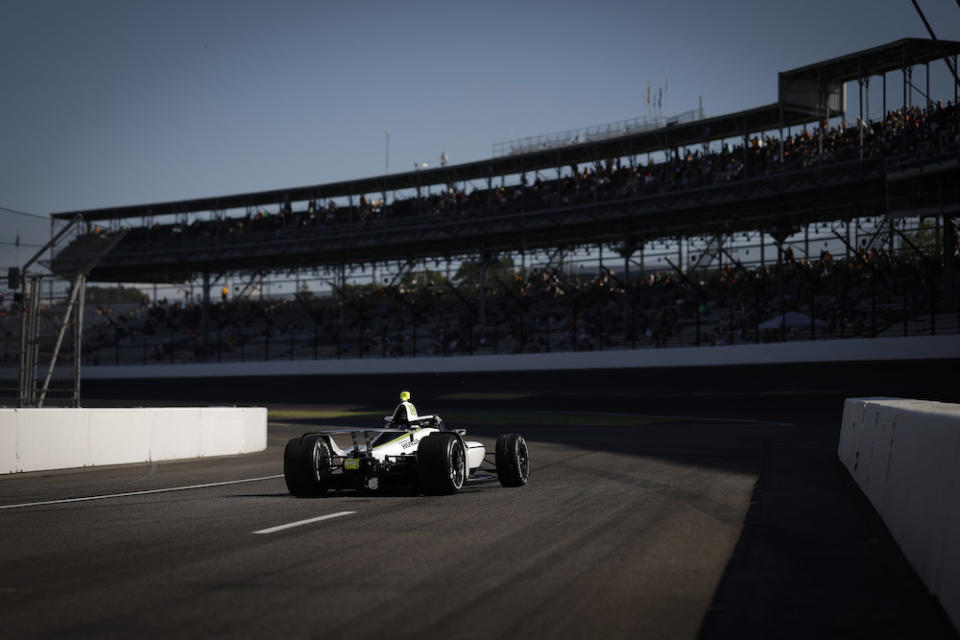
An inexperienced driver, a modestly resourced team and a road course car wearing a superspeedway costume were always going to make for a tricky combination on bump Day. Michael Levitt/Motorsport Images
Q: Saturday was a great day of qualifying at Indy. Rinus VeeKay was the story of the day and the coverage on Peacock was excellent. The only failure was Alex Palou not getting a chance to bump his way back into the Fast 12. Which brings me to the rules change that is needed.
Saturday is the day we want to watch the fast drivers battle to make the Fats 12. Sunday is the day we get to watch the slow drivers try and make the show. Watching Graham Rahal and others fail over and over was the only downside to an otherwise great day.
Option 1: In the last hour of qualifying, all cars get a maximum of one entry into Lane 1. Option 2: Set the field of 30 before the final hour and leave the last hour for the cars in the show to duke it out. Please pass this along to IndyCar.
Ryan Yelles
MP: Interesting ideas, Ryan. I miss the way it was previously done where the entire field had however many days of qualifying to try and make it into the show. Instead of funneling everything into pure joy (Fast Six) or pure misery (LCQ), you had an unscripted affair where teams and drivers with different agendas — some trying to go for pole and others trying to get in — that played out. The lack of structure offered more mystery and presented the potential for surprises with every run.
With the locked down format we have now, there’s no question of who’s going to be on pole — one of six pre-defined drivers — and no question of who will go home if there’s more than 33 entries and the LCQ drivers are identified, which feels a bit anticlimactic to me. You’d naturally get pole attempts and bumping attempts in the last hour, which is why I don’t see the need for special Fast Six and LCQ sessions.
Q: I write this on Sunday morning. After last year’s qualifying debacle from the Rahal team, all we heard about was focus on Indy, focus on Indy, yet here we are again. Rahal cars are 28, 30 and not qualified with Graham. But wait, the team’s one-off driver, Sato, qualified ninth. Must not be the team, must not be the cars, so what is the problem? While Sato was doing a second attempt, the announcers mentioned that Sato has been working on qualifying setup while the rest of the team was working on race setup. What? After the “focus on Indy” mantra, wouldn’t you think they would make sure the cars could qualify well before worrying about the race?
Mark, San Diego, CA
MP: You would, and while the team found improvements during the offseason to make their cars faster, it still takes people to make the right decisions on how to approach the event and where to place their emphasis during each practice session, and for the drivers and engineers to make the right setup calls. Taku and Eddie Jones, who have a long and successful history, did what they’ve shown they can do. Lundgaard, who is by no means an oval master, impressed me every day, and Pietro Fittipaldi, who is working with a new engineer, hasn’t been a rocket for most of the season, so his struggles at Indy are part of a bigger story. And we’ve covered off Graham, so altogether, we have about five different things combining to make life harder for RLL than it should be.
Q: Is it going to be a Chevy party on race day at the Indy 500? Sure is looking like it. Honda have anything for them?
Jeff, State College, PA
MP: The race is run at low turbo boost, and it’s here where Honda has a chance. I wouldn’t say it’s a great chance, but the big disparity we saw was at high qualifying boost. We’ve seen a lot of lifting in the corners in pack running, and Honda has always been really good on the fuel economy side, so going longer between pit stops and having more opportunities to play with race strategy options could be the lone area where the Hondas can tip the balance in their favor. But that’s a lot of ifs and maybes.
Q: Was noticing at the Indy 500 that the cars do not have the new vents on the front of the aeroscreen. Are they using the old, heavier aeroscreens, or are there two versions of the new, lighter one?
Craig
MP: The plan for 2024 is to use the lighter new screens with the new vents on road and street courses, and to stick with the thicker “old” screens for ovals.
Q: Did Dale Coyne ever consider putting Jack Harvey in the car at Indy this year with the difficulties that the team was having getting up to speed with Nolan Siegel?
Kasey
MP: I don’t know, but since Dale was being paid by the Siegel family to run Nolan in the car, I can’t see how he could take their money and be contractually permitted to replace Nolan with another driver. Also, I’m sure a veteran would have done better, but I don’t think Newgarden could have gotten that car into the field.
Q: I was at the Speedway for qualifying on Saturday and enjoyed being there. However, I did feel bad for Nolan Siegel struggling to find speed in his car after he crashed the day before. I heard the Dale Coyne crew had to go to a road course car for a back-up. In that situation, was there ever an option for Dale Coyne to approach another team in Gasoline Alley to buy, beg, borrow, or steal a chassis that is readily suited for ovals rather than cannibalize a road course car?
Brandon Karsten
MP: It wasn’t Dale doing the asking, but yes, a well-known figure in the paddock reached out to bigger and faster teams to see if they could rent optimized components to help Nolan’s car make more speed, and there were no takers.
Q: The NBC graphics showed some cars qualifying in fourth gear, some in fifth and some in sixth. Your explanation?
Rick Smith, San Diego, CA
MP: Teams usually use the top three gears with small rev splits between them so drivers can downshift if when a drop-off in speed happens to they can keep the motor in its sweet power band spot at all times.
Q: So much is made of a driver “doing the double.” It is spoken and written of as some sort of awesome accomplishment. To me it seems unadmirable; a greedy stunt. Surely a driver cannot give both events, separated by a hectic transfer rigamarole, their best.
Most in a position to do so, don’t. What do you, and what do full-time Indy drivers, think of those who attempt it?
Anthony Jenkins, Brockville, Canada
MP: This is the first I’ve ever heard of trying to attempt something arduous and rare as greedy. I respect it, which is all I’ve heard other drivers say about it.
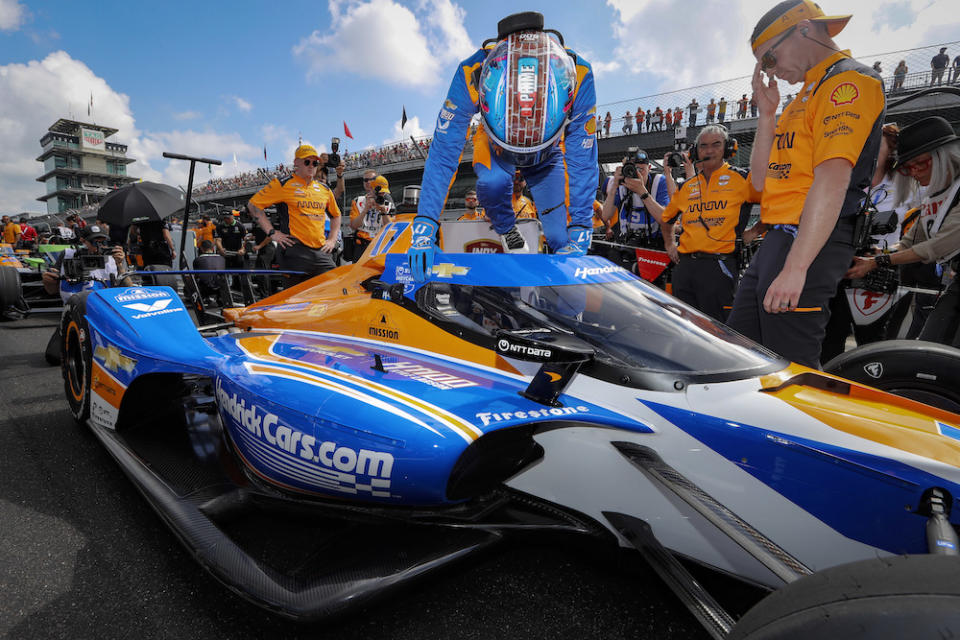
If this is what “greedy” looks like then here’s hoping we see lots more greedy drivers in years to come. Phillip Abbott/Motorsport Images
Q: Not to push another conspiracy but when asked why he knew in March that the Penske cars would be the fastest at Indy, Will Power said that “the other guys don’t have the new pushrods.” Please tell me that with spec chassis and spec power plants Penske has something others don’t have.
Can you elaborate?
Skip Ranfone, Summerfield, FL
MP: Will often speaks in a cryptic manner where he can say the opposite of what he means to say. I’m not familiar with this quote, but it sounds like he’s saying the opposite of what I understand the situation to be. When the new DW12s arrived in 2012, they had normal suspension pushrods that worked as intended.
When IndyCar allowed Chevy and Honda to make custom aero kits in 2015, downforce skyrocketed and those original DW12 pushrods were bending in testing at some tracks, so IndyCar called for an update where bigger and beefier pushrods were introduced to withstand the crazy downforce figures. And those pushrods remained on the cars — they’d become the new norm — after aero kits went away in 2018.
Well, some enterprising teams, having noticed the original and smaller/thinner pushrods were never banned, realized they would have an aerodynamic advantage at the Speedway if they installed the old 2012 pushrods since they cut through the air with a smaller profile and wake.
I can’t say this for sure, but I believe Team Penske was not clued into the old-pushrod game at Indy through 2023, and that — if trying to interpret Power’s comments — would have been a disadvantage to his team. But they were outlawed by IndyCar this year, so all teams are on the same thicker/beefier pushrods to eliminate any aero advantages in this area.
Q: During Indy 500 qualifying Will Power mentioned in an interview that Penske had new uprights and if teams were not running them they wouldn’t have a chance. I know teams have freedom to develop things like dampers and uprights and such, but did Team Penske have a breakthrough after 12 years of running the DW12 and seven years of this iteration?
Joey, Florida
MP: All teams were required to buy and use new, stronger rear uprights in reaction to the upright failure Kyle Kirkwood had in last year’s race when he was hit and had the wheel assembly break free from the upright. Coming back to an earlier point, I don’t always understand what my guy DJ Willy P is talking about.
Q: I noticed during qualifying the Penske cars were carrying onboard cameras, but not the camera on the roll hoop that lets us see the drivers pushing buttons on the steering wheel. Are teams allowed to refuse certain cameras, or is this something specific to Penske?
Brandon Clarke, Milford, OH
MP: I was on pit lane for most of qualifying so I didn’t see the broadcast and what you’re referring to, but a commentator friend from F1 texted to ask the same question about the lack of Penske cockpit footage, so it clearly stood out.
I can’t say what happened here, but I did notice the Penske overhead cameras being shown Monday on the Peacock practice show.
Teams are required to pay $375,000 for the season to have the overhead camera, so since they have to pay to get it, I’d assume they have the right to say whether they do or don’t want it turned on.
Q: Just wondering if, after Newgarden and McLaughlin were DQ’d from the St. Pete race, does that take mean they aren’t eligible for the Leaders Circle?
Mandy, Angola, IN
MP: It does not. It just means they scored no points at St. Pete. Both are running well inside the top 22, which is the cutoff point for Leaders Circle contracts, so the DQs have had no effect on this matter.
Q: Thank you for the article on the issues with the Chevy engine. Can you do an article about the Honda? It didn’t seem to be as straightforward as the Chevy issues, but several Honda teams struggled with power, like Ganassi and Rahal. Also, the Honda engines seemed to have a lot more variation in power with some engines pulling strong (Sato) and others really struggling. Granted, this may be one of the tightest fields in the history of the 500.
John
MP: It’s much easier to write about a known problem like plenum fires than something nebulous like Honda not being as good as Chevy in high boost configuration at Indy. Did Honda make mistakes in their motor development, or did they do an excellent job and Chevy simply took excellence to a higher place? I’d need to be given access to months of Honda’s development concepts, testing, and final decisions to draw a conclusion, and that’s not something a manufacturer would allow.
Felix Rosenqvist was the fastest qualifier for Honda, so all of the talk about Taku getting a special motor from Honda fell silent, just as it should.
Q: I know you’re busy this week, but when you have a moment, can you please educate the broadcasters on the difference between “dampeners” and “dampers”?
DA, Chicago
MP: Shocking, isn’t it?
Q: Many media outlets reported on Sunday that McLaughlin’s Indy 500 one and four lap qualifying speeds were new track records. The record book clearly shows his speeds were below the one and four lap Indy 500 qualifying records, set in 1996 by Arie Luyendyk.
John Severinsen
MP: Pole records, yes, all-time qualifying records, no.
Q: How did ECR put VeeKay’s car back together so quickly and so well in just a few hours? He was faster than Ericsson’s backup car that had been used since Thursday. He was even faster than his teammates who hadn’t crashed.
Kyle
MP: It was a solid crash, but it wasn’t a “big one” where the car was mostly trashed. ECR has great mechanics and, frankly, that’s how long it should take to turn that crash around and get a repaired car back on track. VeeKay’s the best driver at ECR, has stellar engineering behind him, and with some extra time to massage on the car after he got into the Fast 12 on Saturday, they were able to get him up where he belongs. Ganassi did the same with Lundqvist’s car after his crash; it wasn’t as perfect as it was before the crash, but they put in the time to get it as close as possible once time was on their side.
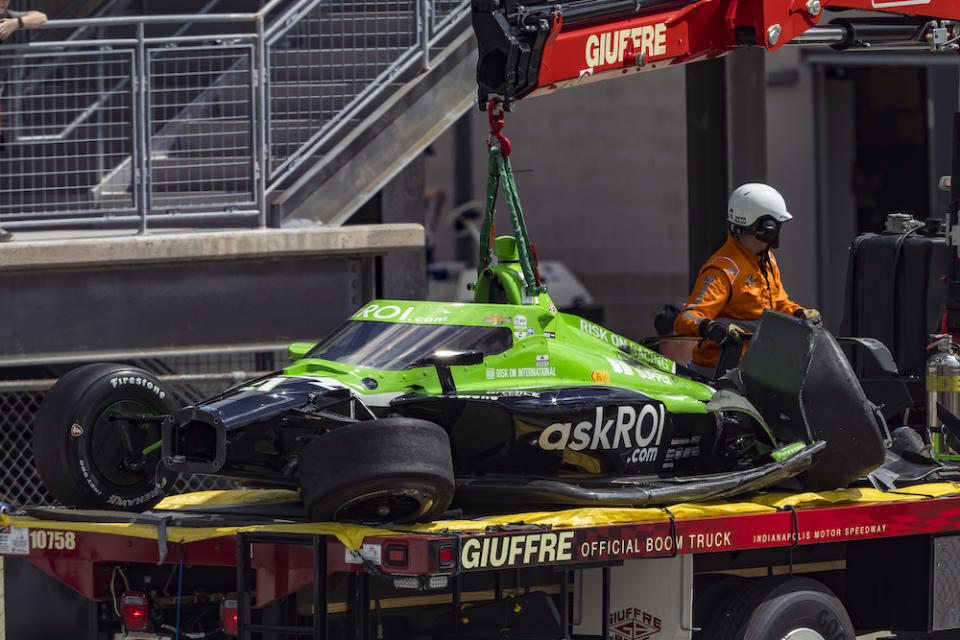
VeeKay’s crash was a setback, but not a big enough one to stop him from putting the repaired car into the Fast 12. Josh Tons/Motorsport Images
Q: Saw your appearance on Speed Freaks which I think was recorded before Tim Cindric’s and the race team engineers’ suspensions. At recording time, you didn’t think Mr. Penske was taking the situation seriously. So, we’ve now had the suspensions and qualifying. In the post-qualification interview, Penske goes out of the way to praise the suspended employees for getting the team the front row results. Is that a class move, or a clueless tone deaf one?
David Parker, Jersey City
MP: It’s just an expected part of how they do things. When you own everything and control everything and are beholden to no one, you do whatever you want.
Q: Does the Indy 500 still award double points? Could one of the perks of charter membership be changing the 500 qualifying order to practice speeds for the charter members and then non-charter entries after that? All the other ovals go based on practice time and going out from 11:00-12:30 is an advantage.
Don
MP: It does not. They could.
Q: Do you know which engine manufacturer is getting the better mpg?
Jake
MP: We need to get into full-tank runs on Carb Day to get an understanding of how the leading Chevy and Honda teams fare with stint length, assuming we get some full-to-empty runs.
Q: With regard to engines: I know teams are tire limited for the 500, but, they seem to really be racking up the miles at will over the many practice sessions. Do they have an engine count for the Indy 500 alone? Does it count against their annual allotment? Do they all drop in a fresh engine the Friday before the race? Or are these engines able to withstand an ungodly amount of miles?
Also, “100 Days to Indy” is a snooze fest. Another IndyCar missed opportunity. It’s pretty clear some drivers just don’t want to be filmed. Newgarden fulfilled his basic obligation to Penske but is shown in a limited fashion. Pato loves the camera. Felix and Ericsson are not livewires. Power is only mildly interesting. Same each week. Pretty similar to last year…
Why aren’t they showing some of the characters like Ferrucci (because he doesn’t live in Indy)? Even though he is not my cup of tea, Sting Ray Robb might be interesting. No Catherine Legge, Teddy Porkchops, Malukas, Rossi, Grosjean flying his plane, etc.
I’m assuming a lot of drivers don’t want to be bothered because it‘s pretty much the same drivers each week and it’s similar to last year. And it seems Penske Entertainment just took the easy way out.
John Dowling, Ann Arbor, MI
MP: Teams are doing a normal amount of lapping. With all of the rain delays, there’s been a compression of time so it’s been busy since they lost a ton of time due to rain. Full-season teams use their regular motor allotment coming into Indy and are given fresh motors for the race and then go back to their normal motors as part of the four engines/10,000 miles per lease program.
I haven’t seen any of Season 2, so I have no insights to offer on what they have or haven’t done. Let’s see what they chose to show in the final two episodes.
Q: Hear me out on this: F1 is the juggernaut. I feel the pathway for U.S. racing in the modern era is to continue to get guys like Larson to do the double. Pato, Newgarden and Herta should give the 600 a try and go over and steal some NASCAR road course wins, too. I smiled when I heard a commentator compare Larson to Verstappen this week. If IndyCar and NASCAR can both promote successful crossover drivers, it gets more eyeballs, and a niche to argue that the best all-around drivers are over here in the U.S.. Especially if one or two can emerge as a modern day Gurney or Parnelli. Thoughts?
Ben, California
MP: I love the idea. I’m sure Pato would be up for it. Not sure if Colton gives a crap. And Josef is very single-minded about winning an IndyCar championship, so I don’t know if the timing is right to make that Cup invitation right now. But Scotty Mac and Pato would be a blast to watch.
Q: With Team Penske’s domination of qualifying this weekend, we have some fans who seem more interested in manufacturing conspiracy theories than following the actual racing. There have been a lot of comments suggesting that Penske gets better engines from Ilmor because he owns the company. What do you know about the engine distribution process? I have to believe that it is random, or at least very transparent to avoid any appearance of conflict of interest?
Alan, Orlando, FL
MP: They’re randomly assigned by Jay Frye’s IndyCar operations team for both Chevys and Hondas.
Q: At the conclusion of Saturday’s session, was Graham Rahal really on the track in time to take a run? It seemed like the gun had sounded by the time he was moving. I’m thinking that it was a good thing that he was slow; it seemed like there might have been some controversy if his time had been good enough to place in the top 30.
A math question, one I’ve actually had for some time: When focused on the live-to-the-second mph speeds shown on the scoreboard at Indy, it seems like the cars spend a lot more time at a number that’s higher than the resulting average speed than they do below it. The straightline speeds have a greater delta over the average speed and a for longer period, than the delta between the slower speeds and shorter distance in the turns vs. the average speed. Make sense? Basically, it seems like the live speed numbers are inflated a bit — or is there something else going on that creates this perceived mismatch between the live trap speeds and the average speed?
Mark, OH
MP: The big MPH numbers or smaller MPH numbers do tell the story, but not by how big or small they are, but by how long it takes to achieve those numbers.
Driver X fires into Turn 1 and hits 241mph, which is amazing. But how much of that 241mph can they hold through the corner and what is the smaller number waiting at the exit of Turn 1, and exiting Turn 2? Seeing the giant MPH numbers entering Turns 1 and 3 is cool, but in qualifying, I’m looking for the Turns 2 and 4 exit MPH to see where they dip down to and how much time it will take to accelerate and pull that number up before they get to Turns 1 and 3.
It’s the recovery period where the motors have to try and regain the lost MPH where the real lap speed average comes into play.
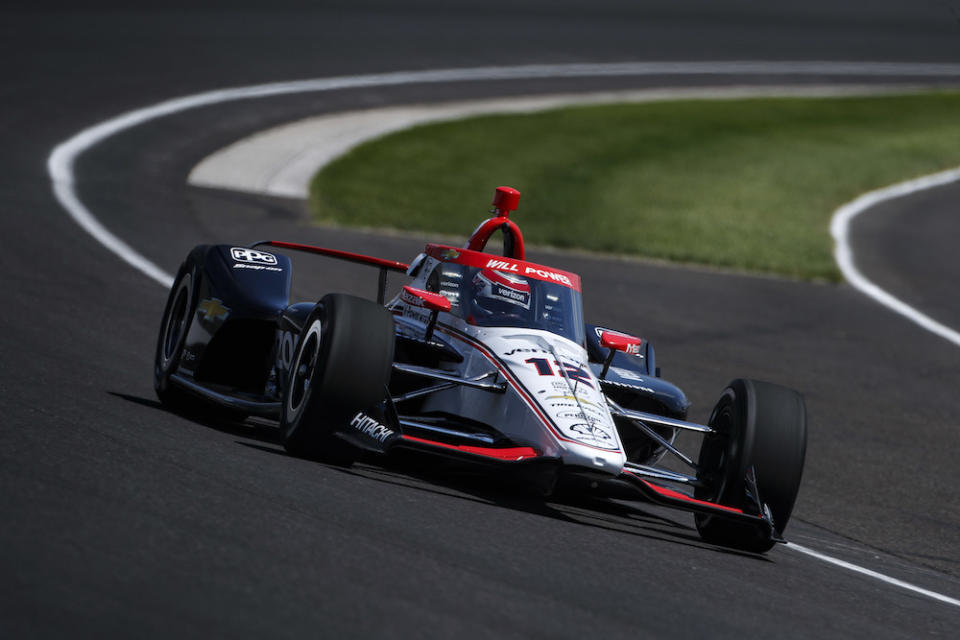
Big MPH numbers at a given point in a lap only tell part of the story during a qualifying run at Indy. Phillip Abbott/Motorsport Images
Q: In your article about this year’s Firestone tires, Cara Krstolic says that Firestone measures all the tires so that “…we have good stagger for the race teams, trying to get everybody a consistent left- to right-side tire difference.”
I recall that drivers back in the 1960s and ’70s, like Mario, would have the mechanics measure the tire diameters so that they could find the stagger that would help them turn left/find speed on the ovals. Sounds like this is now being done by Firestone. Within their allocated sets of tires, can teams mix and match within their black sets (and within their red sets) like days past? Are there rules saying they can or cannot?
Glenn, Renton, WA
MP: Back in the day when the tire constructions were comparatively primitive, teams would inflate the hell out of the right-rear tires in the garages to get them to stretch and increase stagger, but that’s no longer possible (I tried) with Firestone’s Speedway tires so Cara’s team designs in the intended stagger for the rear tires, measures and validates them, and provides them to teams. Each team’s tire technicians do their own confirming stagger measurement to add another layer of confirmation.
I found nothing in the tire rules that would prohibit a team from taking the primary left-front from Set 2 and using it as the primary left-front in Set 5, for example.
Q: There is a lot of interest in IndyCar here in Sweden right now with all of the Swedish drivers competing in the series. How do you rank the Swedish drivers, both among each other and also among all the drivers in the field right now? Felix has started the season strong with his new team while Marcus been struggling for form and Linus and Tom are newcomers to IndyCar. It’s interesting to see what you guys think about our drivers, since you are maybe not hardcore fans of them like most Swedes are.
Emil, Sweden
MP: Tom refers to himself as a Kiwi, FWIW. Felix is showing us what he brought as a rookie with Ganassi; super fast and consistent. I’ll be surprised if he doesn’t get a win this year and have Meyer Shank Racing in the top 10 at the end of the championship. Marcus is capable of winning and being in the top 10 for Andretti, but needs a swift change of fortunes for that to become more realistic. He’s sneakily good. This is just a rough patch for him. Linus has tons of talent but suffers a bit with inner confidence. He should be in a much stronger place a year from now. It’s too soon to tell if he’s title-winning material. Outside of reporting and the professional part of what I do, the three Swedes are among my favorite people in and out of the paddock.
Q: Lime Rock Park would seem to satisfy the geographical needs of an IndyCar race in the Northeast. It’s halfway between Boston and New York. I keep hearing the “not suitable for IndyCars” spiel. Why is it exactly that these cars can’t get around this racetrack as safely as any other race car? There is an elevation change of 75 feet — well under the 180 of Laguna Seca. That can’t be it. This is a track that undulates with the terrain like Laguna, Mid-Ohio. Barber, etc. They race there. Is it the runoff areas? Is it that Lime Rock is not interested? Please explain in words of one syllable.
Jeff, Colorado
MP: No. Too narrow in some places, Too abruptly steep in another. Insufficient runoff in some places for the speed the cars would carry. IMSA pulled its prototypes from Lime Rock for the same reasons IndyCar isn’t an option for racing there.
Q: I know that with the 500 imminent that this qualifies as old business but why haven’t we heard from any team sponsors on the Penske cheating event? Seems to me if I paid millions to put my name on a car, I’d be plenty upset to know I’m not playing on a level field. I would want to at least voice my feelings publicly.
John, Seville, OH
MP: For the same reason most of the paddock, from team owners (excluding Michael Andretti) to drivers (excluding Pato O’Ward), tow the strict corporate line and do not speak out against Penske or Penske Entertainment. Penske stopped speaking to Andretti after his comments to the media in St. Pete, and Andretti spends no money with Penske, so if a guy with no business ties gets ghosted, what would happen if a company that has closer ties to Penske pipes up and criticizes him in public? Ain’t happening.
Q: Moving past Penske’s obviously intentional cheating, is there any reason why Push to Pass couldn’t have unlimited usage? P2P doesn’t seem to be that useful of a passing aid, especially compared to DRS.
One thing I think hasn’t been mentioned when discussing ratings is how much worse IndyCar broadcasts are in comparison to F1. The analogy I would make is F1 feels like watching a movie on Netflix, and IndyCar feels like watching a movie on cable. I understand that IndyCar can’t go to the European model of no commercials, but I think how comparably bad IndyCar broadcasts are is limiting growth with casual and new fans. Does IndyCar do any sort of fan survey asking about this?
To Scott’s question in last week’s Mailbag about why there’s no IndyCar running in the first weekend of May: On the first Saturday of May (May 4 this year), the 500 Festival puts on a half marathon that had about 20,000 participants this year. You run a lap around the track as part of the race.
Will, Indy
MP: Firing unlimited P2P and the 50-100hp it brings through the engines would make them pop on a more frequent basis. Yes, P2P doesn’t provide the cartoonishly easy ability to pass like DRS, for which I am thankful.
The money available to broadcast F1 races is in another universe compared to IndyCar. If NBC/IndyCar had the kind of advertising/funding at their disposal that F1 broadcasters have, there would be no difference in their products.
Q: The entry list for the 500 shows Arrow McLaren as the entrant for the Nos. 5, 6, and 7 cars. Are S and P no longer part-owners?
David, Waxhaw, NC
MP: Been that way for a year or two, I believe. Yes, Sam Schmidt and Ric Peterson are still involved, but no longer have their name on the team since McLaren took controlling interest.
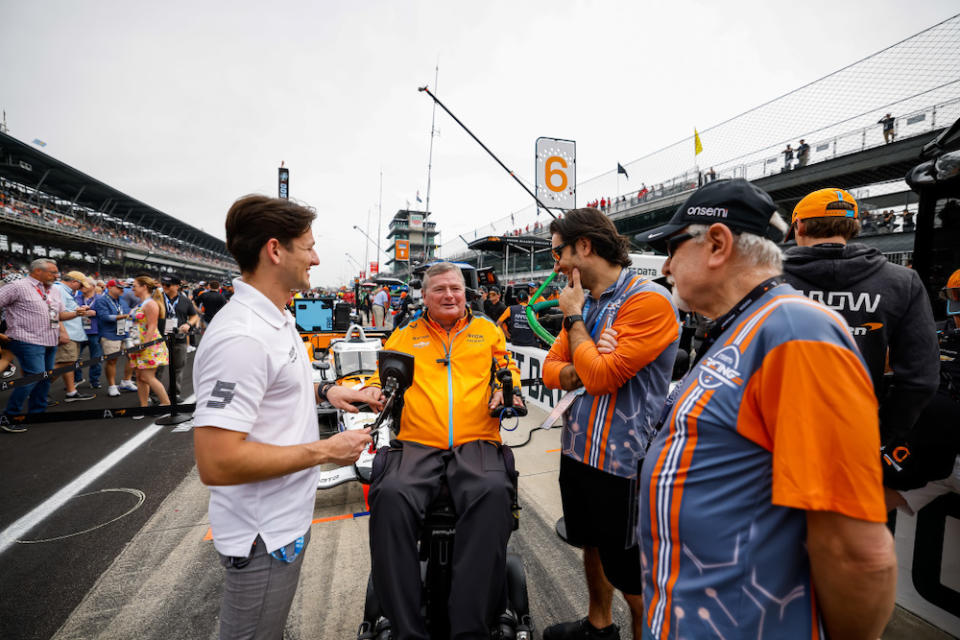
Schmidt’s name is no longer above the door, but he remains involved with Arrow McLaren. Brett Farmer/Motorsport Images
Q: Here I go again. We tell the world the Indy 500 is our most important race. IndyCar gets furious when F1 mentions anything “spectacle”related, yet when it’s time for a reality show, all of a sudden we only care about the last 100 days before the race?
Isn’t “100 days to Indy” only an Indianapolis thing? Teams prepare year-round. Deals get done, or not. Cars get prepped. Driver drama. If IndyCar is serious about showcasing their most important event, then the first episode of the year should be the last two laps of the previous year’s race end and then go from there. 365 Days to Indy.
Vincent Martinez, South Pasadena, CA
MP: Thanks for writing in, Vincent.
Q: Got a chuckle out of your balls-to-the-wall crazy and financially devastating idea for the next gen IndyCar. How about I balance it with something more realistic but which still has a crazy twist?
For starters, we all know a more properly integrated hybrid system is a must. But on the engine side, I would lean towards retaining the current Ilmor/Chevy and Honda engines — but not exclusively. It’d mainly be to get the new car up and running at minimal new expense to the teams, but if someone else wanted to make, say, a 2.6L V8 producing similar power, they’d be allowed to (though bringing in the old Cosworths would not be allowed, we’re looking for new tech here, not old). Of course the chassis would be able to take larger engines without issue.
How big? Well, anything up to the size of the new “Ford Indy V8” — an Indy 500 exclusive powerplant for one-off entries based on the 5.0L Ford Coyote engine. And as a little nod to history, cars running this engine would be required to paint the wing endplates (if applicable, more on that shortly) and rollhoops in classic Coyote Red.
As for the chassis side… Well, I am sadly not permitted to share images, but I have been privy to a CFD experiment where someone has created a design that looks like a classic IndyCar, but has modern aerodynamic performance. It makes the main body a very smooth wedge design, bolts on ground effect heavy sidepods with a top profile that smooths the airflow over the rear wheels, and places a cowling on the front end that gives it the look of a classic front-radiator car, but is in actuality an aerodynamic duct that serves as the point where the front end aero grip is adjusted, while the rear end uses a blade spoiler with endplates for rear aerodynamic adjustability.
The efforts were not using industrial-level CFD computers/software, so its designer does acknowledge it might not actually be as good as it appears (something he notes up front is that the front aero cowling might not allow for as much adjustability as hoped, so some small stubby front wings may be necessary), but for it to have come out this way means there must be at least some validity to the concept. Even if in the end it can’t come out to IndyCar levels of effectiveness, he suspects it could at least be used as the basis for something of Indy NXT-tier performance, so the goal of this project is more to make something for SCCA Formula Atlantic, but I think the idea should really be looked into for IndyCar’s next-gen car, as it would definitely make the series stand out. The design, while drawing inspiration from the classics, looks thoroughly modern rather than being a throwback.
Moreover, this chassis design is by far and away the most beautiful racing machine i have ever laid eyes on, and that is no exaggeration. It saddens me that I cannot provide images of the model, but I may dust off my old half-baked kitbashing skills to make a rough model of the design to share if people want to see it.
FormulaFox
PS: The concept also used really fat tires to add some more mechanical grip to the equation.
MP: We need to see this.
Q: I figured you could use a break from Penskegate 2024. Here’s my simple question that I’ve seen conflicting answers to: Do drivers get to keep the trophies they win, or do they go to the team?
Gary Vail, Sherman Oaks, CA
MP: Thank you for the break. All depends on what the negotiate for in their contracts. Stars tend to receive their trophies, but some teams demand to have them, and then it’s on both sides to figure out a solution. Paying for a second trophy is not uncommon. A driver told me about an offer he got to do a big sports car race earlier this year, and while the pay was decent, the contract stipulated that the team would own any of the spoils — trophy included — that might come from a podium result. That driver told me they declined the offer due to the trophy stipulation.
Q: I was surprised to see yet another driver get behind the wheel for Dale Coyne, which prompted me to look for a list for this year’s drivers. What I found instead was a list of all Coyne drivers since the team’s start in 1991. If Wikipedia’s list is to be believed, the team has had a staggering 96 drivers since 1991.
In comparison, Penske seems to have had just 37 drivers since Penske’s USAC days in 1968.
A lot of Coyne drovers also boomerang. Even Justin Wilson and Sebastien Bourdais — who together earned four of the team’s six all-time wins — drove for the team in non-consecutive time periods.
What’s behind all that turnover?
William Tyree
MP: Pretty straightforward answer: Dale’s team is the oldest in the series to consistently take paying drivers for one or both cars. Nobody even comes close in that regard. If you’ve been a paying IndyCar driver dating back to the 1990s, there’s a strong chance you’ve driven for Dale, and thankfully, he’s one of the few remaining team owners who opens the door to young talent to hire their services and allow them to learn and hopefully attract the interest of a bigger team, just as David Malukas did.
Alex Palou would not be a two-time champion if it weren’t for Coyne co-entering a car with Palou’s Japanese Super Formula entrant in 2020.
Dale has also paid drivers, or brought on co-entrants to help cover the bills, which is what brought Bourdais to the team. Before that, Dale put the money up to run Justin. Coyne’s team is a short-term destination for most drivers because of their limited budgets, bigger desires to move upwards, or Dale’s willingness to fund part or all of an entry. The revolving door in the 51 car this year is not by choice, but in the absence of a consistent paying driver, he’s taken what he can from some and paid for the car to compete when he had to.
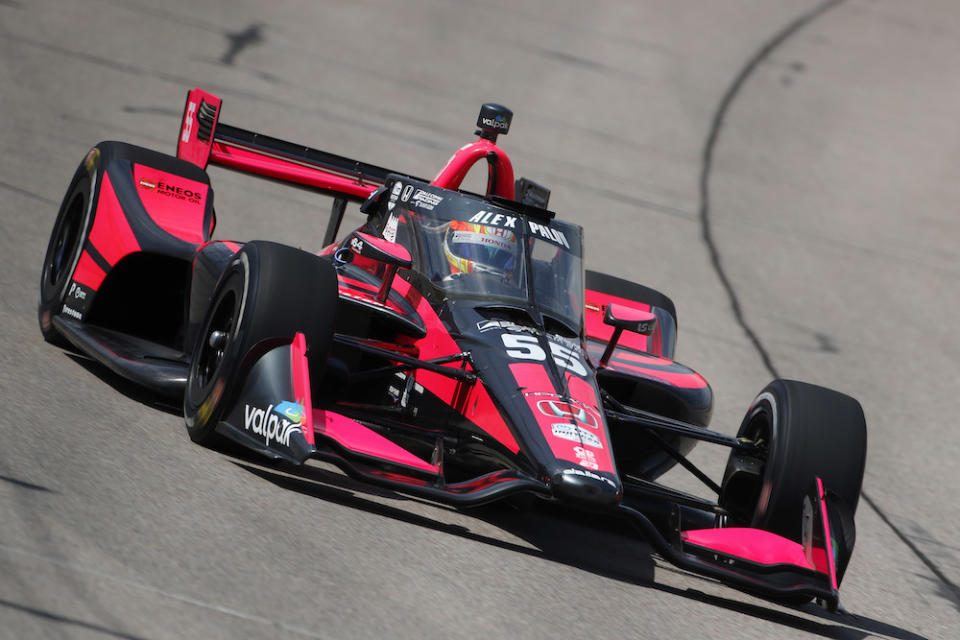
Imagine how different the last few championship battles would have looked had Coyne not opened the door to IndyCar for Palou. Phillip Abbott/Motorsport Images
Q: I see F1 is talking about abandoning hybrid power in 2030 — presuming fully synthetic fuel is a success — in favor of engines with better sound and drivability and less complexity. Bravo! I just wish Chevy and Honda would get their heads out of their backside and admit hybrids are a trend that is on its way out and stop spending any more time or money implementing them in IndyCar, where no one will see a difference or even care.
Pato was spot-on with his comments about people wanting to see new things, and I believe that’s why IMSA is gaining popularity. I’m hoping IndyCar will wake up and appeal to people’s senses — design a new sleek IndyCar, put a turbo V8 in the back with 900hp and let ’em loose, then sit back and watch F1 try and catch up instead of it being the other way around.
And Part 2 of the future plan should be to get every race on network TV. Messing around with multiple channels and now streaming — there is no continuity and they are only catering to the most die-hard fan that is willing to put in the work to find any broadcast. F1 races in the states are always on ESPN — simple.
Quit doing just enough to get by and playing second fiddle to F1. Get a great car/engine package and put it where everyone can easily watch. Only then will the series and drivers get the respect (and dollars) they deserve.
BA
MP: It all sounds great, but hybrid sales are a big deal for both brands — especially Honda — so if you recall the main premise for manufacturers in racing who want some sort of road relevance in what they do (NASCAR aside) at the track, racing with hybrids makes total sense.
When road cars were all about big and brutish engines, we had big and brutish engines. When smaller displacement, high-power turbos were the rage in road cars, we got small racing motors with big turbos. We even had some big motors with turbos. It’s how the sport works. And whenever hybrids pass as a road technology of importance, I’m sure we’ll see that reflected in what we race.
Q: Why aren’t the straights at Indy incorporating the SAFER barriers? Crashes can be so unpredictable that one would think they would be installed around the whole track. Same goes for the inner walls (thinking of a Greg Moore scenario at Fontana in 1999).
Pongo in SoCal
MP: Because they’re expensive and the frequency of hard crashes into walls on the straights is so low that it hasn’t been proven as a need.
Q: I am 75 years old and have been an IndyCar and Formula 1 fanatic since I was nine. Please don’t do the math!
I have attended over 150 races in person, but the greatest bargain of all were the Watkins Glen doubleheaders in July. I think younger fans would welcome a look at these unique weekends when all of the major manufactures who competed at Le Mans, Sebring and Daytona would run a six hour endurance race on Saturday at the Glen. On Sunday, the Canadian American Cup Series — the most open, free formula series ever — would run its race. The long defunct series had two rules: the wheels had to be covered by fenders, and the cockpit had to have room for two people. The roar of engines that eventually grew to over 500 cubic inches was thundering and visceral.
Those of us who were lucky enough to attend those weekends saw two world class races with every manufacturer and every world-class driver of note were treated to something that was never seen before or since.
Bob Isabella, Mentor, OH
MP: I was too young to catch the Can-Am era (the real era, not the single-seaters with fenders), but lose my mind at historic racing events where the proper Can-Am cars run. I’m jealous, Bob!
Q: I sense a major change in your attitude about IndyCar. Are we in for a negative year? Things you can’t comment on yet?
Jeff from Road America
MP: I don’t believe so, Jeff. Assuming hybridization happens in July at Mid-Ohio and comes online without any major hiccups, the rest of the season should be good. I’m most excited about the change of venue to farewell the year at Nashville Speedway; if the championship isn’t settled by then, and the series nails the aero configuration, we should have a whale of a race to settle the title.
On a wider scale, I wake up every day wanting to write positive and happy things about the series, but it’s been a rough patch for IndyCar over the last while, and since we’re here to tell you what’s happening — good or bad — there’s been more nonsense to chronicle than I’d prefer.
The unrelenting failures by Penske Entertainment amid the less frequent victories make me sad. I wish they lit fewer fires with their decisions, but that’s what we’ve had for those who want to follow the “inside baseball” aspects of the sport. For those who just want to watch and enjoy the cars on track, there’s nothing to get in the way; the racing’s still great and the dramas behind the scenes shouldn’t affect one’s love for the series.
It’s a bit like a band, in my mind, where the music is great, but the band members are constantly fighting and causing mayhem. All that really matters is if the songs kill and the concerts are amazing, but it would be even better if the people making the thing we care for made better choices and dialed the drama down to zero.
I often think of my guy Robin Miller who spent years topping up his flamethrower when stupidity reigned at 16th & Georgetown, and among some team owners, and then spent many years with the flamethrower tucked away in the rafters when things were mostly good and happy. The love for IndyCar never changed. I wish IndyCar could get back to a place where it stacks wins upon wins and the paddock returns to a happier state of being.
That’s why I’ve loved my weekends covering IMSA for the last few years. It’s by no means perfect, and teams and drivers will always moan about Balance of Performance changes, but as a whole, it’s just a warm and positive paddock to navigate where the people running IMSA aren’t habitually shooting themselves in the foot.
I had one IMSA GT team owner tell me earlier this month at the Laguna Seca race that he had a meeting scheduled with series president John Doonan. I asked what he planned to address with him and was told, “I don’t really have anything to discuss. We’re happy and pretty content. I just wanted to meet with him to have some face time to maintain the relationship.”
Hearing that from an IndyCar team owner would be impossible today, but I hope that will change ASAP.
Q: In reference to Dan Schwartz’s remarks in the May 15 Mailbag, I also propose an IndyCar race at Las Vegas Motor Speedway… but linking part of the oval with an infield road course, similar to Daytona or the Roval at Charlotte. Call it the Dan Wheldon 400k in memory of the late great IndyCar icon.
Las Vegas has the hotels, weather, restaurants, casinos, glitz and glamor to host this event, in addition to the downtown “downforce sucking fans’ dollars” F1 street race weekend. If these same F1 race-goers could experience just one IndyCar race at LVMS, they would experience real open-wheel racing where more than two or three teams have a legitimate chance to win or podium.
While the outcome of F1 races is almost predetermined, IndyCar is a dogfight with racecraft and varying strategies coming into play.
The IndyCar Series, its broadcast, radio and print partners must continuously pound this message home, describing how competitive the series is, the closeness in drivers’ lap times, etc.
David, Pittsburgh
MP: Thanks for writing in, David.
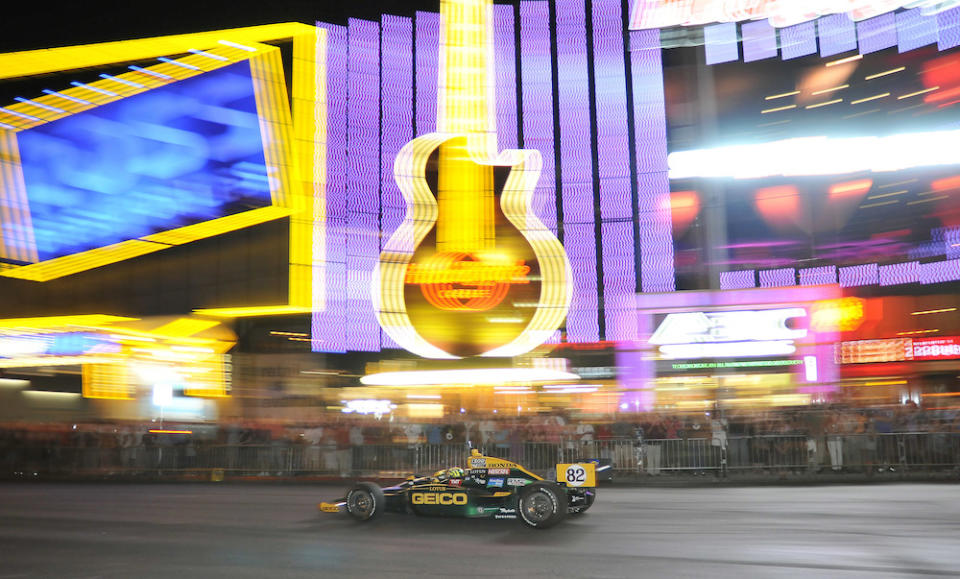
IndyCar hasn’t shown much appetite for a Las Vegas return. Walt Kuhn/Motorsport Images
Q: My suggestions for Mr. Penske for YouTube and streaming:
1. Show all practice and qualifying for free on IndyCar’s YouTube channel. GT World Challenge is the model I would follow. All GT racing appears for free on its channel.
2. Put all open-wheel ladder series free on YouTube. Have regulars like Graham Rahal, Conor Daly on those broadcasts.
3. Bring back Jon Beekhuis
4. Any race that appears on a paid steaming service should be shown live on IndyCar’s YouTube channel.
In my opinion it’s time to think outside the box, get creative. Who knows maybe you can get attention of companies who never thought of being a part of racing.
David Tucker
MP: Thanks for writing in, David 2.0.
Q: I’m not a fan of charters as I hate what it did for NASCAR. You will never see another Alan Kulwicki head to Charlotte and win the championship. It also made it profitable to suck. I’m still of the old school mindset of the fastest teams should be in the race. But I realize it is going to happen. So on to my question:
IndyCar seems set on limiting the field to 27 cars with guaranteed spots for 25 charters. I don’t understand the 27-car limit outside of the 500. I can understand in regards to engine supply limits, but I don’t understand the track limit that has been talked about. I understand Toronto has limits due to all the construction limiting the pit area, but so many other tracks with pit areas that can handle 35-40 stock cars or other series. So why can’t IndyCar field 30 cars? That sounds like a nice round number and allows for a couple of more teams to enter the series (ignoring the engine supply issue).
John
MP: It’s more than just Toronto, as we’ve written a few times of late. Most road and street courses don’t have as much space to fit 35-40 cars as ovals do.
Q: In the May 15 Mailbag, somebody named John thought that IndyCar’s lack of ovals and a lack of American drivers was the reason it’s not more popular. That is BS. If anything, the variety of international talent and tracks raced at is part of the allure of IndyCar. The only issue that I as some stereotype of a snooty European would have with it is that some of these American drivers are a bit on the boring side.
IMO, the main issue that IndyCar has that it’s in a no man’s land of being successful enough to maintain existence in perpetuity, but lacks that extra something to really put itself back to the forefront of the average person’s radar (outside the month of May). The international talent does help because while it might be a surprise to some, people outside the USA do follow IndyCar and want to see their driver do well.
It also comes off as a fairly casual sport where people actually do have fun and do not have to have about 95 million different sponsor obligations to fulfill every weekend compared to F1. Quite un-elitist, if you ask me.
Otto, Laukaa, Finland
MP: I’m with you, Otto. Most of IndyCar’s drivers are fairly interesting.
Q: We all know that Mercedes’ dominant F1 run from 2014-21 began with a huge advantage in power with the new V6 turbos with rules during that time only allowing relatively small incremental changes to the engines. During that period I also assumed the chassis was excellent and maybe only trailed Red Bull in that area. Given how in recent years Mercedes has had continual shortcomings in chassis design, is it possible that the cars in the dominant period were never that good and the power was just so much better that it hid the shortcomings? Or has there been some significant brain drain in their chassis development program that has led to their current situation?
Second, McLaren’s current significant performance advantage over Mercedes while using the Mercedes power plant further points out how poor the Mercedes chassis is. Do the Mercedes engine customers have the same spec engines as the works team? Same goes for Ferrari. I remember years ago the Ferrari customers would get the engines the works team used the previous season.
Ed Kelly
CHRIS MEDLAND: The initial Mercedes cars were definitely not great aerodynamically, even by Mercedes’ own admission. If you look at it, Williams was able to closely challenge at times in those first few years as it opted for a specific type of design with the same power unit, but at the same time the first McLaren of that era was a long way off. Integration of the power unit into the chassis was key and done well by Mercedes, but the team acknowledges it took a while until it felt like it was building really good cars.
And those cars were very good in the higher-downforce era from 2017 onwards, when there was much more convergence. Teams were allowed to develop more freely and did catch up, but the engines have been frozen in recent years and that’s actually placed a bit of a limitation on where someone like Mercedes could use a strength, and made it solely an aero and chassis series. The team was very good at understanding the previous generation of car, but you’d still say the PU played a part in Mercedes staying ahead of Ferrari and then Red Bull until 2021. Whereas now, it doesn’t have as good grasp of ground effect regulations and how to maximize car performance in this era.
The way the cars are run are very different — far lower and more stiff, with less rake (basically the difference in ride height between the front and rear axle) — and Mercedes hasn’t been able to extract performance in this way so far. When it put raw downforce on in a similar way to the previous cars, it didn’t translate into lap time because it wasn’t always usable or predictable. These cars are so complex that it’s not how much downforce you theoretically have, but how much of it is efficient and stable.
McLaren is the perfect example you use, because that’s a team that does have a better understanding of how to do what Red Bull is doing and get the ground effect cars working efficiently, and is clearly quicker than Mercedes with the same power unit. But on the last point, yes, all customer teams have to receive the exact same specifications of engine, so that is a clear comparison you can make but also removes an area Mercedes could have had an advantage.
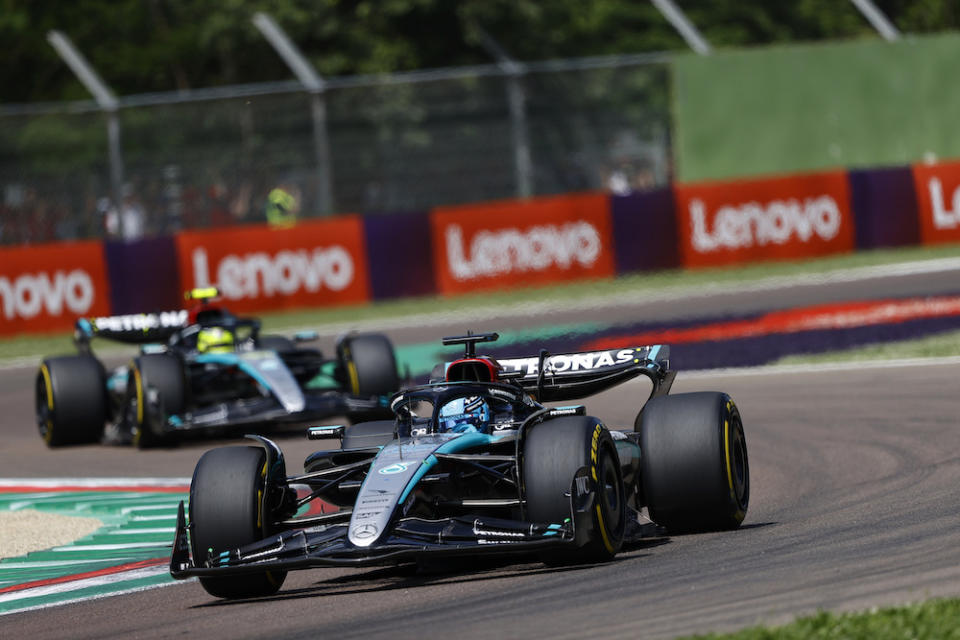
Mercedes has not found its happy place within the current regulations. Andy Hone/Motorsport Images
THE FINAL WORD
From Robin Miller’s Mailbag, May 21, 2014
Q: Attention Indy 500: Please pay attention to what Kurt Busch did. Make a deal with NASCAR, run the Indy 500 on Memorial Day Monday, so that more NASCAR drivers can participate at Indianapolis. You could get 7-10 drivers to come here and IndyCar drivers might want to run Charlotte, too.
And the deal? Rotate the two races swapping Sunday/Monday each year like a home/away football series. Can you imagine the crowd here to see Jimmie Johnson, Tony Stewart, Dale Jr., etc., running the 500? What does NASCAR get — no TV competition for their race, and they could (and should) start their race earlier because fans don’t want to be at the track until 10-11pm. And to make it interesting, add a $5 million bonus for any driver that can win both races in a weekend.
Lee Driggers, Indianapolis
ROBIN MILLER: Bless your heart Lee, it’s OK to dream. First off, NASCAR isn’t going to do ANYTHING to accommodate IndyCar or the Indy 500. Secondly, Rick Hendrick would NEVER let JJ or Junior or Kahne run the Speedway (Gordon doesn’t want to) and Busch is only doing it because Stew is his car owner. I reckon Kyle Larson is the only other Cup regular with a shot at Indy sometime.

 Yahoo Autos
Yahoo Autos 